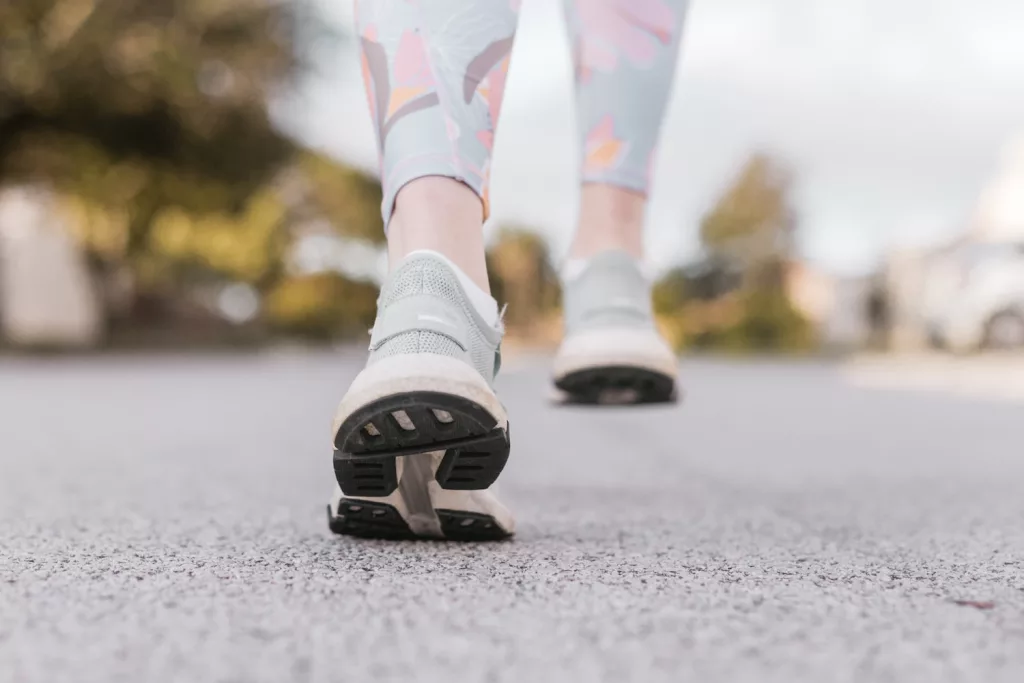Have you finally made up your mind to start walking for your health? Walking for as little as 15 to 30 minutes a day can have a significant impact on your health and shape.

You can achieve optimal health without much effort. Taking a brisk walk every day is one of the easiest things you can do for your health. Walking is convenient because you can do it anywhere, anytime and at your own pace.
You can enjoy the outdoors and get some exercise without the risks of more strenuous activities. No need to walk all day. A 10-minute brisk walk every day can help you reach your 150 minutes of physical activity goal. If you’re overweight, older or haven’t exercised for a long time, walking is an excellent form of exercise.
The benefits of walking increase with the pace, distance and frequency of walking. Increase your daily walking, whether it’s a walk in the park, a trip to the shops or interval training on a treadmill or track.
This aerobic activity can burn calories, strengthen your heart and improve your stamina. Walking has many benefits, but should you do it regularly or switch it up? In this section, we look at what happens to your body when you walk every day.
How does daily walking affect your body?
1. Your bones and muscles will be in better shape.
Walking is associated with increased joint mobility, reduced risk of bone loss and fewer fractures. Low bone density indicates osteoporosis, which causes bone loss and brittleness. Walking helps keep your bones strong by using them to support your weight, which can help prevent bone loss.
The more you walk, the stronger your muscles, tendons and ligaments around your joints become, reducing the load on them and making them more efficient at supporting your body weight. This lowers the chance of pain or injury. What’s more, walking at a moderate pace is low-impact and requires no recovery, so you won’t get tired or miss tomorrow’s workout due to fatigue.
2. Boost your strength and endurance
It is a fact that your energy levels will increase after participating in any form of physical activity that gets your heart rate up, your blood flowing and your body’s endorphins working.
Walking is no exception to this rule, and you do not need to walk for countless hours to feel the benefits. Just increasing the amount of time you walk from 20 minutes to 30 minutes, three times a week for six weeks, can result in a 20% increase in overall energy and a reduction in fatigue.
3. Improve your mood, mind, memory and sleep.
When you walk, your body releases endorphins, which boost your mood and reduce stress. Lowering stress levels can help you sleep better. You’ll also lose consciousness more quickly when you’re exhausted. When you’ve finished walking for exercise, your muscles are tired and ready to rest.
Walking can also help your mind work better. Aerobic exercise reduces the risk of long-term health problems such as high blood pressure, type 2 diabetes and high cholesterol. Daily walking could also increase blood flow to the brain, which is essential for brain health because of the negative effects of chronic conditions such as depression and anxiety.
4. Take better care of your heart.
Your heart health depends on several things, including blood pressure, inflammation levels and muscle strength, to name a few. Remarkably, a daily walk can address most of these issues, resulting in a healthy and happy heart.
Daily walking has been shown to reduce mortality from heart disease in older people by 53%. Your heart’s ability to pump blood around your body becomes stronger and healthier. The more you walk, the more it will help you with your workouts.
5. Stay slim and trim.
You can burn between 90 and 110 calories in 20 minutes of brisk walking, where brisk is defined as a pace you can manage, not too slow or too fast. Of course, to keep the weight off, you need to watch your calorie intake to ensure that you do not exceed the recommended daily maximum for your height and weight.
6. Exhaustion and soreness.
How can you tell a real injury from the aches and pains of everyday walking? A general feeling of muscle stiffness or aching is probably nothing to worry about. Pain that is sharp or stabbing and localised to one area is a warning sign of injury. Weight-bearing activities such as walking can be hard on the joints, especially as you get older.
Daily walking can cause pain for some people. Walk less frequently and at a slower pace if you find that walking vigorously every day is too hard on your legs. Get some rest and switch to using other muscles every other day.
7. Susceptible to injury
Injuries, such as fractures, can result from repetitive movements, which is another potential disadvantage for walkers. Start by walking for five to ten minutes a day and work your way up to thirty minutes a day.
We recommend that you follow the ’10 percent rule’, which states that you should increase the amount of activity you do by no more than 10 per cent every week until you achieve your targeted result.
8. Feeling burnt out
Even if you enjoy walking, it’s possible that doing the same thing day in and day out can get boring after a while. Being unmotivated because you’re bored with your fitness routine is counterproductive. Keep your daily walks interesting by varying your route, walking with a companion or listening to music.
Walk at different times of the day. Morning sights contrast with midday and evening sights. To make walking more enjoyable, ask a friend to join you. Keep track of your daily walking distance and time. You can walk further and burn more energy as you get fitter. And as you get fitter, increase the intensity.
Be sure to stretch and warm up beforehand. Gentle walking is the ideal way to warm up. Start each walk slowly to warm up, then speed up. Afterwards, gently stretch your calves and thighs. Wear light clothing when exercising. Too many layers can cause sweating and skin irritation.
Disclaimer: This is for informational purposes only.
What do you think about this list of high-potassium foods? Did you find this helpful? Let us know in the comments.
Source: Livestrong
You can also visit our Facebook and YouTube pages to know more about plants and their health benefits.
You might also like:








